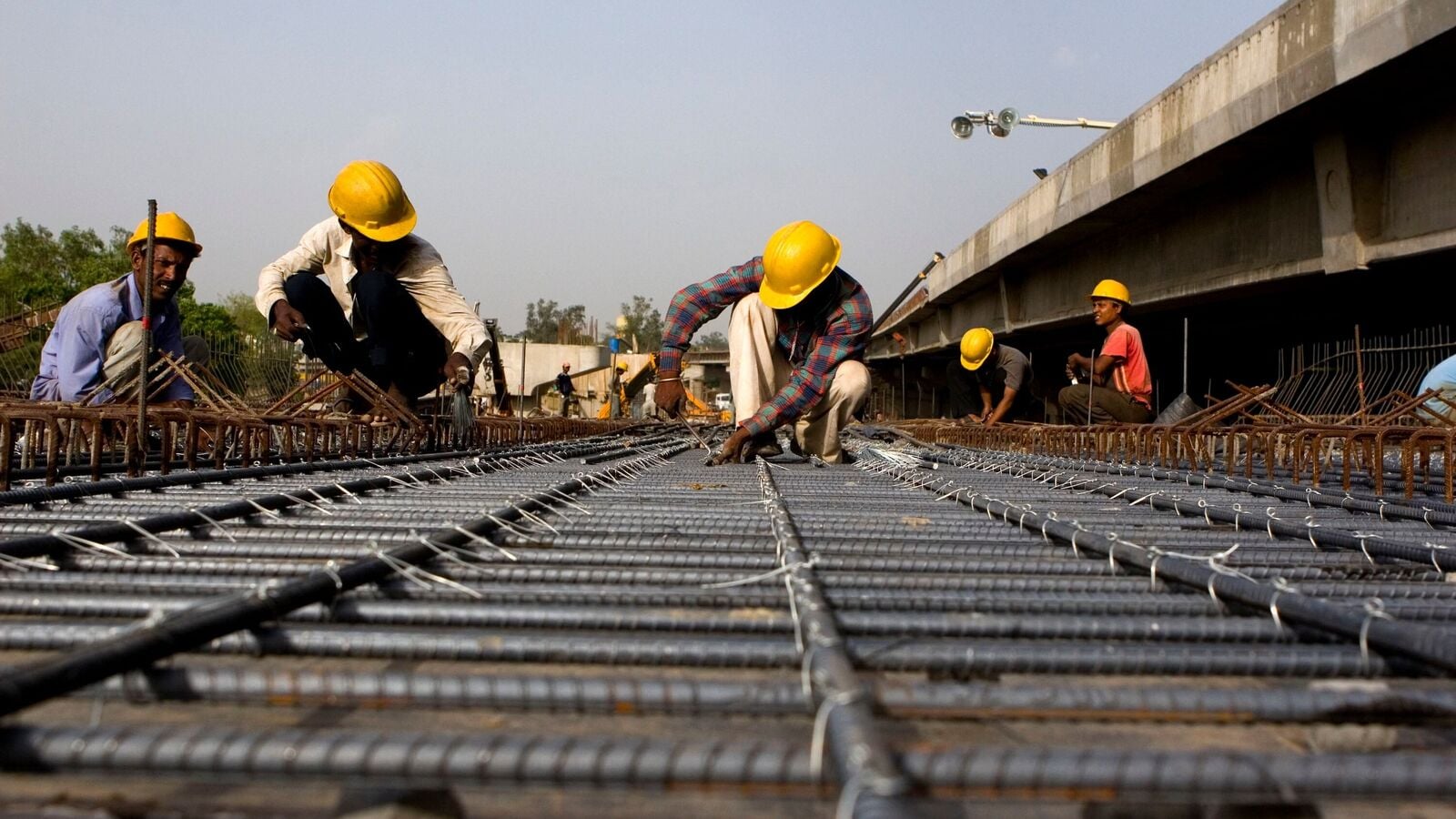Pawan Bisnoi, a 32-year-old electrician-cum-mason based out of Fatehabad, Haryana, has been in the trade since 2007. Last year, a 20-year-old boy who had joined as an apprentice ended up teaching him content creation on social media. Bisnoi started shooting his everyday electric and masonry work on his iPhone 11 and uploading it on his Instagram handle @bijliwala_mistry from October.
Read this | Kidfluencers on a timeout as proposed data protection rules force an industry rethink
“Initially, when I uploaded videos, it didn’t get a lot of views, so I had given up uploading after posting a few reels. Then suddenly some of them picked up, and started getting responses in the form of views, likes and positive comments which motivated me to start uploading again,” Bisnoi said (translated from Hindi).
Bisnoi’s account in four months has gained over 10,800 followers. His 15-60 second reels get over 100,000 views each. Most of his viewers, he believes, are electricians and masons like him, who comment that they like his work and get to learn from him. Some suggest improvements, too.
New genre
Bisnoi represents one of the fast-growing community of influencers. Since January 2024, there have been over 100,000 Instagram posts on topics like electrical work, masonry, plumbing, welding, etc., as per data from influencer marketing platform Qoruz. The average reach of these posts was 85,000 views, and many of them caught millions of eyeballs. For comparison, the average view counts of influencers in India are between 125,000 and 200,000 and blue-collar influencers are not far behind.
He is currently working on 32 projects in his town, each of which he estimates will last two years and generate a minimum income of ₹60,000. This leads to him earning around ₹9.6 lakh annually.
He hopes to increase this income by monetizing his influence over his community and promote products of commonly used brands in the profession like cables, switchboards, appliances and pipes on social media. He has reached out to a few cable companies on Instagram, including V-guard, exploring collaborations, but hasn’t heard from them yet.
Read this | 10-year-old Benjamin Joby’s viral video mirrors the rise of online motivational content
However, companies that sell products like pipes, electrical equipment, steel and other supplies used by these influencers are yet to catch on to this growing trend and tap it as a marketing avenue.
Company support
Some are keen to become early adopters, like Jindal Stainless. The stainless-steel company rolled out an advertisement campaign in June featuring fabricators that make steel articles. The campaign, named ‘Zung Warriors’ (Rust warriors), addressed several social issues while using the blue-collar workforce as the protagonists.
“As a forward-looking organisation, we are always open to exploring innovative avenues to enhance the reach and impact of our messaging,” said Abhyuday Jindal, the company’s managing director.
While the firm is yet to tap into the new breed of blue-collar social media influencers, it has kept an open eye.
“As the blue-collar influencer ecosystem grows, we intend to explore deeper collaborations and expand our outreach to diverse communities,” Jindal said. “We recognise the potential of this emerging trend.”
Jindal Steel and Power, another steel company, disclosed in its investor presentation that it has enrolled 46,000 influencers across nine states for strengthening its retail sales network. When contacted, the company did not elaborate on the nature of this engagement.
Marketing analysts suggest that these companies are very calculating about their returns on investments and see better prospects in campaigns with emotional value, than experimenting with this new breed of influencers.
Viable alternative?
“As a company, investing in the betterment of the larger blue collared community by training programmes, certifications and recognitions seems a more viable investment to attract the workforce rather than singling out a few influencers from the community and investing in them,” said Prateek Sinha, partner at consulting firm PWC.
For other brands, investing heavily in influencer marketing, only popular ones make the cut. Companies like appliance brands V Guard and Goldmedal, pipe brand Astral Pipes and cement brand UltraTech collaborate regularly with creators on Instagram but have not worked with any blue-collared influencers yet. Queries from Mint to these companies did not get a response till press time.
A Shajapur, Madhya Pradesh based 19-year-old electrician, Kuldeep Chouhan, who has almost 20,000 followers on his Instagram handle electrician__05 said, “Brands usually prefer popular faces on social media to promote their products. However, as workers, they (blue-collar workers) have more say in selecting which brands are used in projects than the customers themselves.”
Read this | Influencer marketing presents brands with its challenges, ROI biggest concern
He suggested that people like him who have a strong social media presence and influence on actual decision makers, i.e., the technicians, should get better opportunities to promote brands and earn from it. “It will be a win-win for brands and us,” he said.
Agencies take note
Influencer marketing agencies are sitting up and taking note. Anirudh Sridharan, co-founder of Hashfame, a networking platform for marketers and influencers, highlighted, “You can’t fake the kind of trust that comes from someone who’s got grease under their fingernails and years of field experience…Thanks to blue collar influencers, for the first time, we’re seeing mechanics and plumbers become the new trusted voices, not because some marketing team picked them, but because they actually know their stuff.”
He underscored that they might not be polished spokespersons, but they are real people showing how products hold up in real life—like when they are under a car or up on scaffolding all day.
Growing smartphone penetration is also a leading reason for their growth. An August report by the Internet and Mobile Association of India (IAMAI) predicts that India’s smartphone user base will surpass 1 billion by 2025. The report also forecasts that rural areas will account for about 56% of the country’s new internet users by 2025.
Conscientious influencers
Some blue-collared influencers have started getting monetisation opportunities as they become more popular, but not from brands they prefer.
Shaikh Shafik Shaikh Khwaja, 30, a mason based out of district Parbhani, near Aurangabad, Maharashtra, has been making comedy videos related to his masonry since the past two years on his Vivo phone. His massive local social media popularity on has helped him reach 125,000 followers on his Instagram handle @shaikhi_shafik_srk69.
He has been working as a mason for over a decade and makes a daily wage of about ₹900, but when he got approached by a Rummy platform, offering him his first collaboration opportunity and ₹8,000 to promote their app two months back, he firmly rejected it.
Also read | 2025 will be a crucial year for Indian creator economy
“To me, ₹8,000 matter a lot but my followers are priceless. I don’t wish to promote an app that can potentially ruin someone’s life. I am rather hoping for a pipeline, cement, putty or any such brand to offer me a collaboration based on my social media popularity, and I can authentically and ethically promote it,” he said.
Nehal Chaliawala contributed to this story.
Blue collared workers,influencers,monetise,reach,social media,Blue collar influencers,brands,brand deals,blue-collar influencer ecosystem,smartphones,monetisation opportunities
#Blue #collar #workers #emerge #influencers #brands #catch


